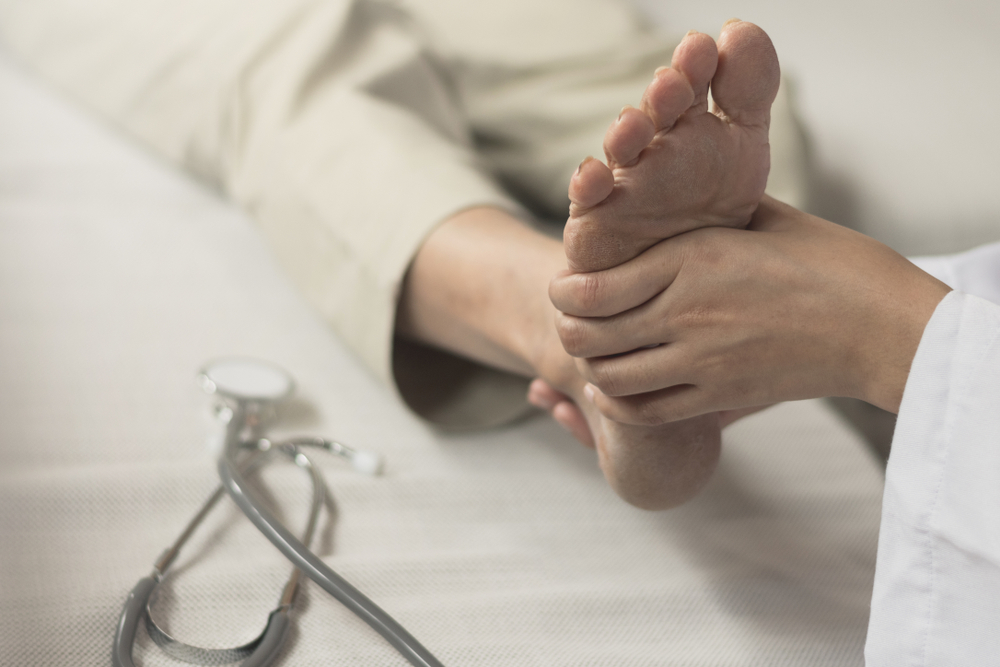Reactive arthritis refers to a form of peripheral arthritis often accompanied by one or more extra-articular manifestations that appears shortly after certain infections of the genitourinary (GU) or gastrointestinal (GI) tracts. The majority of affected individuals possess the HLA-B27 gene. Cases have been observed following epidemics or sporadic outbreaks of diarrheal illnesses caused by Shigella, Salmonella, and Campylobacter microorganisms, as well as by sexually acquired infections, usually Chlamydia trachomatis. However, there have been reports of reactive arthritis following many other types of infections as well. The symptoms of reactive arthritis typically appear two to four weeks after the triggering infection. Caucasians are more commonly affected than African Americans or other racial groups that have a lower frequency of the HLA-B27.
Urethritis, or inflammation of the urethra, usually is the first manifestation. Mild burning with urination (dysuria), as well as discharge are the most typical symptoms in men, but occasionally, inflammation in the prostate and/or testicles is present. Women may have dysuria, vaginal discharge, and purulent inflammation of the cervix and/or vagina. Additional symptoms may include fever, chills, and an increased need to urinate.
Conjunctivitis, when present, usually accompanies urethritis or develops within several days. Some patients develop subtle crusting of the eyelids in the morning, while others develop obvious conjunctival redness, and a burning sensation with exudation. Inflammation of other portions of the eye, including acute anterior uveitis (iritis), can occur and is associated with severe redness, pain and sensitivity to light.
Joint manifestations typically appear last, often after symptoms of urethral and ocular inflammation have subsided. In cases following GI infection, the bowel symptoms usually have resolved one to three weeks prior.
The arthritis is characteristically described as additive, meaning more and more joints are progressively affected. It is typically asymmetric, or not the same joints affected on both sides of the body. The arthritis is also oligoarticular, affecting an average number of four joints. The joints most typically involved are the knees, ankles, and feet, and they are often swollen, warm, tender, and painful. Also, inflammation can occur at bony sites where tendons, ligaments or fascia have their attachments or insertions (enthesitis).
Low back pain and buttock pain can be seen and are common in reactive arthritis, occurring in approximately 50% of cases. Spine symptoms are probably caused by involvement of the sacroiliac or other joints of the spine. However, inflammation of the sacroiliac joint (sacroiliitis) develops in only 20% of patients.
In most patients, reactive arthritis usually lasts for 3 to 12 months. Relapses may occur in up to 15% of cases. Approximately 15% of patients continue to have a chronic, often destructive and disabling arthritis requiring more potent immunosuppression.
The diagnosis of reactive arthritis is made on clinical grounds, based on a detailed history and physical exam, lab findings, and relevant imaging studies.
Education is a key element in the care of a person with reactive arthritis. If the reactive arthritis has been preceded by a sexually transmitted disease, safer sex practices should be employed.
In general, people with reactive arthritis experience significant improvement in joint inflammation after administration of non-steroidal anti-inflammatory drugs (NSAIDS), such as ibuprofen or naproxen. If the arthritis is refractory to NSAIDs or becomes a chronic condition, second-line agents which are more potent can be used. If the infection is still persistent when reactive arthritis develops, then it should be treated with appropriate antimicrobial therapy.




